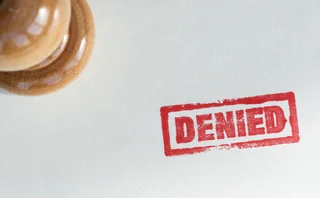Calling A New Data Tune
Mapping LEI Links

The legal entity identification (LEI) standard put in place by the Office of Financial Research (OFR) in July will generate more data for firms to track and manage, creating opportunities for service providers while burdening investment firms, according to industry observers and service provider executives.
The fields that must be filled in for the LEI will only be a couple more than were previously used, such as counterparty names and addresses, according to Stephen Engdahl, senior vice president of product strategy at New York-based enterprise data management software vendor, GoldenSource. The need to archive positions and transactions, however, will create much greater data warehousing capacity needs, adds Engdahl.
Clearing firms’ role in supporting the new LEI standard remains undefined, says Sean Culbert, a partner and co-lead of the finance, risk and compliance practice at financial industry consultancy Capco. “Will a clearing firm allow a bank to continue to use the current LEI structure and will they provide a mapping service for the bank, or will the bank be responsible for doing those conversions themselves?” he asks.
Some firms may not do anything themselves regarding LEI because they expect their clearing firm to shoulder the responsibility, according to Culbert. Large firms realize it sooner if LEI data service either is not available externally or will have a cost. Firms must also consider that data quality can be affected by relying on third parties to interpret LEI needs.
Culbert sees a “cottage industry” growing around mapping the LEI data. “You can see small firms out there asking to let them deal with chasing this down for you,” he says. “Some of the bigger banks offering clearing services are looking for ways to be stickier, because the margin compression within the clearing industry will clearly be an issue. Bigger banks have to get stickier so the buy side doesn’t just hop from one clearing firm to another looking for the lowest-cost transaction. This may be a way for them to add value-added services just on the mechanics of clearing and settling a trade.”
Mapping solves the issue of managing LEI data but creates a large burden of perpetually having to perform mapping work, explains Culbert. “Why not just convert it? Identify where all your LEIs are and convert old to new,” he says. “The second effect is that all the financial reporting, risk management, management information systems, regulatory reporting, legal reporting and everything else with a reference to the legacy LEI has to be converted as well. You face this massive convergence exercise. These are the volume issues we’re looking at.”
Identifying Structures
Industry associations have made moves to determine how the LEI standard will be administered, with the Global Financial Markets Association (GFMA) last month recommending Swift as registration authority, DTCC to collect requests for new LEIs and store reference data on each LEI, and Avox as validator of the LEIs. Yet these organizations are not the only ones interested in taking on these roles. Standards organization GS1, which administers an identification system using barcodes and electronic messages for 25 sectors including healthcare, manufacturing and retail, teamed up with New York-based Financial InterGroup Holdings in 2010 to work on using GS1’s identification numbering system to identify products and entities in the financial industry, both in LEI form and in other securities identifier forms.
Additionally, Financial InterGroup and GS1 sought consideration from regulators to become the registration authority for LEI. “In the end, these identifiers are needed so valued position data can be aggregated and made available to regulators. The volume of such data would not be any more than financial institutions put together now,” says Allan Grody, president of Financial InterGroup. “They have to aggregate their information for doing their own enterprise risk management, and they do it with a huge amount of mapping services and processing to get this information collectively looking like it is in a standard format. Our proposed approach is not to demand the information gets sent to any government agency, but rather that it will be available in a standard database within a financial institution. Regulators could sweep the databases using search technology to do aggregations on the fly and look for hot spots. When they find something, they can go into the organization itself; they always have access and look deeper.”
Structured data such as LEI data is easier to organize, according to Grody. “We have a whole different gestalt to our solution,” he says. “We don’t have to go through elaborate data dumping and cleansing. If the data is just left where it is, we can sweep the databases and get it. You don’t have this option to solve the problem with unstructured data.”
The Value of Identification
Aside from registration authority and other LEI administration duties, the industry will need more help to contend with all the communications LEI will require, says Tim Lind, global head of strategy for enterprise content at Thomson Reuters. The company intends to support the objectives of the LEI initiative and the requirements of its global clientele, to establish LEI as the definitive key in linking financial data with entities.
Certain core parts of a securities identifier will become commoditized, according to Lind. These include name, country of origin, legal form, address and core identifiers. “Our focus is on the value-added content that will be linked to the core LEI record,” he says. “In the future, LEI will be the key to automate the exchange and synchronize legal entity data between Thomson Reuters and its customers. That’s why we’re embracing this.”
The new standard will drive the creation of dashboards of information, says Lind. “First, we will discover connections within complex corporate structure, then link entities to value-added information—securities, news, historic information and financials—then track it and give the data that our customers need to manage changes that may impact credit-worthiness or the risk profile of their counterparties,” he says. “The precision with which we integrate data with our customers will be enhanced with the presence of the LEI.”
Currently, if a user sought information on 1,000 entities, either the provider or the user has to adopt a proprietary identification scheme to link records between disparate databases, according to Lind. The LEI will function like a social security number for entities, he adds. The need to create these linkages, in turn, will “spawn a new set of business applications that can consider a broader set of information to model market and credit risk,” says Lind.
Linkages must happen to support modernization of risk models and help prevent a recurrence of the 2008 crisis, which was why the OFR supported the LEI standard. With the OFR still developing infrastructure to assess systemic risk, risk management providers must also develop an application or model that considers data components that weren’t previously included in identifications, says Lind.
New models must capture all the information now available, including media reports coming at a speed not previously possible, notes Lind. Key information can also include supply chain impact on creditworthiness, exposure in the repo market and value of collateral. “All these can be leading indicators of an episode of risk,” he says. “The impact will be a new renaissance of risk management assessments and credit assessments, [definitions of] what is systemic risk and how do we set limits, embrace certain counterparties and set a universe of people we will do business with. All that has to be rationalized through some kind of assessment and model. There will be a lot of interesting work there and those models are all going to need a lot of data.”
Future Challenges
With the LEI generating more data, and service providers devising ways to map, structure and manage that data—enabled by the industry indicating a preference for registration authority and administrative functions—firms that need to consume identification data must have dashboards, linkages and models. They need to create these internally or choose the right provider for the job. Putting an LEI standard in place is only the beginning.
Only users who have a paid subscription or are part of a corporate subscription are able to print or copy content.
To access these options, along with all other subscription benefits, please contact info@waterstechnology.com or view our subscription options here: http://subscriptions.waterstechnology.com/subscribe
You are currently unable to print this content. Please contact info@waterstechnology.com to find out more.
You are currently unable to copy this content. Please contact info@waterstechnology.com to find out more.
Copyright Infopro Digital Limited. All rights reserved.
As outlined in our terms and conditions, https://www.infopro-digital.com/terms-and-conditions/subscriptions/ (point 2.4), printing is limited to a single copy.
If you would like to purchase additional rights please email info@waterstechnology.com
Copyright Infopro Digital Limited. All rights reserved.
You may share this content using our article tools. As outlined in our terms and conditions, https://www.infopro-digital.com/terms-and-conditions/subscriptions/ (clause 2.4), an Authorised User may only make one copy of the materials for their own personal use. You must also comply with the restrictions in clause 2.5.
If you would like to purchase additional rights please email info@waterstechnology.com
More on Regulation
Experts say HKEX’s plan for T+1 in 2025 is ‘sensible’
The exchange will continue providing core post-trade processing through CCASS but will engage with market participants on the service’s future as HKEX rolls out new OCP features.
No, no, no, and no: Overnight trading fails in SIP votes
The CTA and UTP operating committees voted yesterday on proposals from US exchanges to expand their trading hours and could not reach unanimous consensus.
Big xyt exploring bid to provide EU equities CT
So far, only one group, a consortium of the major European exchanges, has formally kept its hat in the ring to provide Europe’s consolidated tape for equities.
Jump Trading CIO: 24/7 trading ‘inevitable’
Execs from Jump, JP Morgan, Goldman Sachs, and the DTCC say round-the-clock trading—whether five or seven days a week—is the future, but tech and data hurdles still exist.
Pisces season: Platform providers feed UK plan for private stock market
Several companies in the US and the UK are considering participating in a UK program to build a private stock market composed of separate trading platforms.
How to navigate regional nuances that complicate T+1 in Europe
European and UK firms face unique challenges in moving to T+1 settlement, writes Broadridge’s Carl Bennett, and they will need to follow a series of steps to ensure successful adoption by 2027.
Nasdaq leads push to reform options regulatory fee
A proposed rule change would pare costs for traders, raise them for banks, and defund smaller venues.
The CAT declawed as Citadel’s case reaches end game
The SEC reduced the CAT’s capacity to collect information on investors, in a move that will have knock-on effects for its ongoing funding model case with Citadel.








